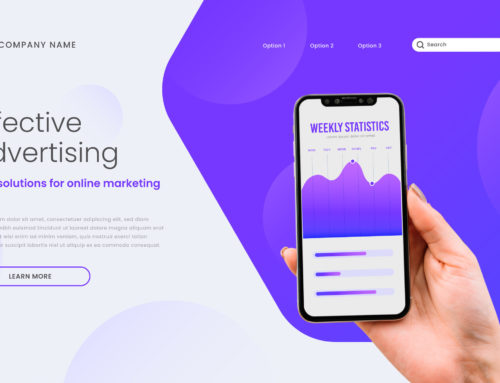Understanding the importance of A/B testing is one thing. But knowing what to test and how to pull it off is more complicated.
Some businesses jump into A/B testing without ever really knowing where to start. Their tests are basically random, and the insights they gain from them are often more trouble than they’re worth.
It’s easy to get frustrated with this. But you don’t have to. Follow the steps below to discover fertile A/B testing ideas and how to test them to boost your conversions.

Getting Clear on Where You Want to Be
Every business website has a specific objective. It isn’t online just to look pretty or entertain people.
So there’s always an objective, but that objective varies depending on your niche. If you’re operating an ecommerce store, your objective might be to get visitors to buy more t-shirts online. A SaaS company’s objective could be to get more people to become paid subscribers.
Let’s say you’re running that SaaS company. How would you go about achieving your desired outcome? By breaking it down into goals or action steps to get you there. Your current goals could be to:
- Increase the percentage of visitors who opt-in to your email list
- Convert more paid traffic into trial customers
- Reduce your churn rate of current subscribers
Take a few minutes to think about your top priorities right now, write them down, and define them in your analytics. The best goals are the ones you’re able to measure. If you can’t measure your goals, how can you distill them into quantifiable action steps?
Your objective (and the goals you set to achieve it) might change over time. The key is to use your current goals as a jumping off point to begin A/B testing. You can always reassess your situation as your business grows.
Measuring Before You Manage

“What get measured gets managed.”
This quote from Peter Drucker rings true here. You won’t be able to use A/B testing to improve your business if you don’t measure what’s going on now first.
A hybrid approach that combines analytics (quantitative data) and customer feedback (qualitative data) will give you the clearest picture of what is happening on your website right now and why.
The insights you gain from collecting and analyzing this data will show you how reality matches up with your current goals. This is essential for identifying and exploiting A/B testing opportunities to grow your business.
Looking at the Data
First things first; you need to figure out what’s happening on your website right now. You might have your intuitions, but nothing can replace hard data.
That’s where your analytics platform comes in. Even free analytics programs like Google Analytics give you access to an incredible amount of data points.
If you haven’t done so already, configure your analytics platform to ignore vanity metrics. The vast majority of available data points won’t help you: 1) see if you’re reaching your goals; or 2) get insight into why you are or aren’t.
Also consider segmenting your analytics data. You might have several subsets or “types” of customers. These segments come from different places, are interested in your business for different reasons, and act dramatically different on your website. Slicing your analytics data into thinner chunks gives you a better idea of what’s working well (and what isn’t) for which visitors.
Your analytics data can give you valuable insights about:
- Most visited pages
- Top entry pages: the first page someone sees when they land on your site
- Top exit pages: the last page someone sees before leaving your site
- Exit rates: the percentage of visitors who leave after visiting a specific page
- Unusually low performers: these pages have a high potential of improvement
Talking to Customers
Your analytics platform gives you numerical insights a brick and mortar company could only dream of.
But it doesn’t give you the full story. It does a good job of pointing out statistical red flags, but it doesn’t explain why those flags are red.
Now’s the time to reach out to the only people who can give you that information: your website visitors. A lot of your competitors aren’t willing to do this. If you are, you can create results that they can’t.
Reach out to customers (or former customers) through email or the telephone. This is one of the best uses of your time to find profitable A/B testing ideas and grow your business.
You can also use online survey tools like Formstack or Qualaroo to ask for feedback automatically. If you keep your questions brief, you might be surprised how many people are willing to offer their opinions.
You’ll begin to notice patterns after you gather feedback from around 50 people. And the more feedback you get, the more obvious the patterns will become.
Deciding What to Test

Hopefully you’ve gotten clear about your business goals, used analytics to measure where you’re at right now, and gathered customer feedback for explanations why you might be falling short of your goals.
Next up: deciding what to A/B test.
This is part science and part art. Before you pick an element to A/B test, you have to weigh the potential improvement a successful test could bring against the time it will take you to generate statistically significant results.
Your analytics data shows you where your weak points are. Customer feedback offers explanations why. You can find fertile ideas for A/B tests at the intersection of those two points.
Let’s look at an example to get a better feel for this.
SaaS Company Example
Say you’re running the hypothetical SaaS company from earlier. For your initial A/B test, you decide to focus on your goal of converting more paid traffic into trial customers.
Your analytics data reveals the average visit duration on the landing page where you send paid traffic is incredibly low. Exit surveys identify a common complaint: people have a hard time seeing how your application could help them.
You think that your landing page headline is doing a poor job describing the benefits of your app. That could explain the low average visit duration and customer complaints; people see the headline and leave.
This is ripe for an A/B test. “If I change my headline to focus more on customer benefits, I’ll convert more paid traffic into trial customers.” Now you have a working hypothesis you can test. The best A/B test ideas are measurable and designed to move you closer to your business goals.
Running Your Test Until You Get Actionable Results
The last thing you want to do is stop an A/B test too early and change your website based on inconclusive results. Doing that might even hurt your conversions.
It’s important to run every A/B test until there’s a statistically significant difference between your “A” results and “B” results. This gives you confidence that the test outcome is legitimate and not a statistical anomaly.
How long it takes to generate statistically significant results depends on what you’re testing. Check out this tool to help you find out how long you need to run your A/B test before you can move on to the next step: analyzing the results and picking a winner.
Analyzing the Results and Choosing a Winner

Once you have statistically significant test results, it’s time to analyze them.
Which version of the test moves you closer to your goals? The winner becomes part of the new “control” (or “A”) design for your next A/B test.
Because you’re only testing one element at a time (unlike with multivariate testing), you can be confident that the element that performed better is the preferable option.
But the fun doesn’t stop there…
Rinse and Repeat
Don’t rest on your laurels after just a few A/B tests.
Consistent testing is what makes the A/B testing strategy so effective. Marginal improvements add up over time and create extraordinary results. But you have to commit to testing for the long haul to reap those benefits.
A/B testing shouldn’t be a special event, but an ongoing process you integrate into your overall conversion optimization strategy. Apply the steps in this post, and you’ll have no shortage of ideas to test. Get started today.
What’s your idea for your next A/B test? Leave us a comment below and let us know!
Photo Credits: DogFromSPACE, HeavyWeightGeek, James Wheeler, and stevendepolo via Compfight cc





